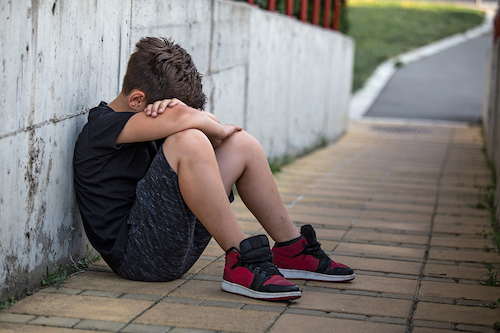 Approximately eight in every 100 children aged between nine and 10 in the US report suicidal ideation.
Approximately eight in every 100 children aged between nine and 10 in the US report suicidal ideation.
A large study of nearly eight thousand children aged from nine to 10 found that although roughly 8.4 per cent of children reported thinking about, considering or planning suicide, less than two in every 100 or 1.3 per cent reported attempting suicide. One in every hundred had current or past plans of suicide.
The researchers were able to identify both risk and protective factors for childhood suicidal ideation.
“Suicidality in children was higher than we expected; about 8 out of 100 children seem to have had suicidal thoughts. Children who had such thoughts were more likely to have other psychological problems (mostly anxiety and depression),” Dr Sophia Frangou, co-lead researcher of the study and a professor of psychiatry at Icahn School of Medicine at Mount Sinai, told Theravive.
“Our findings highlight the significance of the family environment, both in terms of risk and protection. Children living in families experiencing conflict (shouting, arguments, and fights) were more at risk. Conversely, the risk was decreased for children whose parents were very engaged in their lives, they knew what the kids were doing and with whom. A positive and nurturing school environment was the other important protective factor.”
In undertaking the study, the researchers measured suicidal ideation of children by separately asking children and caregivers about personal, family and social characteristics, along with any suicidal history in a questionnaire.
The researchers used modelling to measure any association between suicidal ideation and personal, family or social factors.
They found that characteristics associated with an increased risk of suicidal thoughts in children aged nine to 10 included psychological problems and exposure to family conflict.
Children who reported suicidal ideation, and in particular boys, were also found to spend on average an hour longer using screens on the weekends. However, the researchers note this requires further study to determine whether the relationship between screen time and suicidal ideation is causal (for example, due to exposure to cyber-bulling) or correlative (linked with social withdrawal).
“We were not able to separate whether increased screen time was a risk factor or whether children with suicidal thoughts tended to spend more time on devices as a means of escaping or forgetting their difficulties,” Frangou told Theravive.
In the United States, suicide is the second leading cause of death for those aged between 10 and 14. In the last decade, the number of children’s admissions to hospital due to self-harm or suicidal thoughts has more than doubled.
“Suicidal attempts were not as common as thoughts but they increase the risk. More importantly however, the presence of such thoughts identifies a group of youngsters that are in desperate need of help and support,” Frangou said.
“Suicidality in children is of particular interest for two reasons. Suicidal thoughts and behaviours are a risk factor for suicide. In addition, suicidal thoughts so early in life indicate increased vulnerability to a host of other mental disorders much later in life.”
Factors found to be protective against suicidal ideation included greater parental supervision (parents knowing where their children were, what they were doing and with whom) and a child having a positive view of school. The researchers say these are possibly protective due to their role in aiding development of identity, resilience and self-esteem.
The researchers are hopeful their findings will help parents, clinicians and teachers to better intervene to protect children. Currently, the best way of supporting children in this area is unclear, but evidence suggests school-based programs like the Mental Health Pack for Schools initiative in the UK, which helps identify vulnerable children at school, are likely to be successful interventions.
“Young children can experience extreme distress to the point of suicidality. The main risk factors can be changed though providing psychological and social support to the children and their families. Doing so may prevent more severe mental health problems in children in many years to come,” Frangou said.
Elizabeth Pratt is a medical journalist and producer. Her work has appeared on Healthline, The Huffington Post, Fox News, The Australian Broadcasting Corporation, The Sydney Morning Herald, News.com.au, Escape, The Cusp and Skyscanner. You can read more of her articles here. Or learn more about Elizabeth and contact her via her LinkedIn and Twitter profiles.